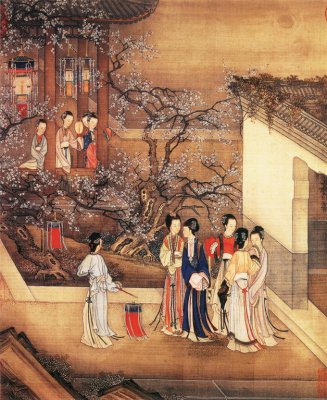Qing Dynasty Culture
 The Qing Dynasty drove China towards a cultural centric society. Innovations and literature flourished with the aid of a developing publishing industry, prosperous cities, and the adoption of Confucianism.
The Qing Dynasty drove China towards a cultural centric society. Innovations and literature flourished with the aid of a developing publishing industry, prosperous cities, and the adoption of Confucianism.
Culture during Manchu Rule
Poetry and paintings were highly appreciated by the Manchu emperors. In 1711, a rhyme dictionary was printed and remained an authoritative publication up until present day. Emperors continued to sponsor literature which actually led to the assembly of the largest collection of poetry and prose of that time. The collection was completed in 1782.
Calligraphy and painting were also of high interest. Court painters and scholars were often hired to work for political figures and nobles. These two disciplines were considered one of the Chinese “Four Arts,” which were critical elements of cultural identity of that time.
Culture Grows during Qing Period
The Qing period brought even more growth to the arts and culture. Poetry was highly appreciated by educated gentlemen, but most writings of that time actually came from women. Some of the most well-known Chinese pieces of literature were written during the Qing dynasty rule.
In 1877, Six Chapters of a Floating Lifewas written. Similar writings continued to be published, focusing on various aspects of life and meditation.
Scholars and More
Several cultural personalities also lived in this period. Huang Zongxi, Wang Fuzhi, and Gu Yanwu were three of the most representative Confucian scholars. All of them developed new thoughts and teachings for Neo-Confucian apprentices.
The emperors proclaimed themselves patrons of these writers and all other scholars and artists. Their rulership protected and promoted culture and the arts while the nobles adopted them as a means to enforce their social status.
Cultural Cuisine
Traditional cuisine also rose during that time and managed to stir a cultural pride. The male chefs of that time started to adopt various techniques to improve the aesthetic standards of the traditional dishes. Tea drinking became more common and made its way into everyday life.
